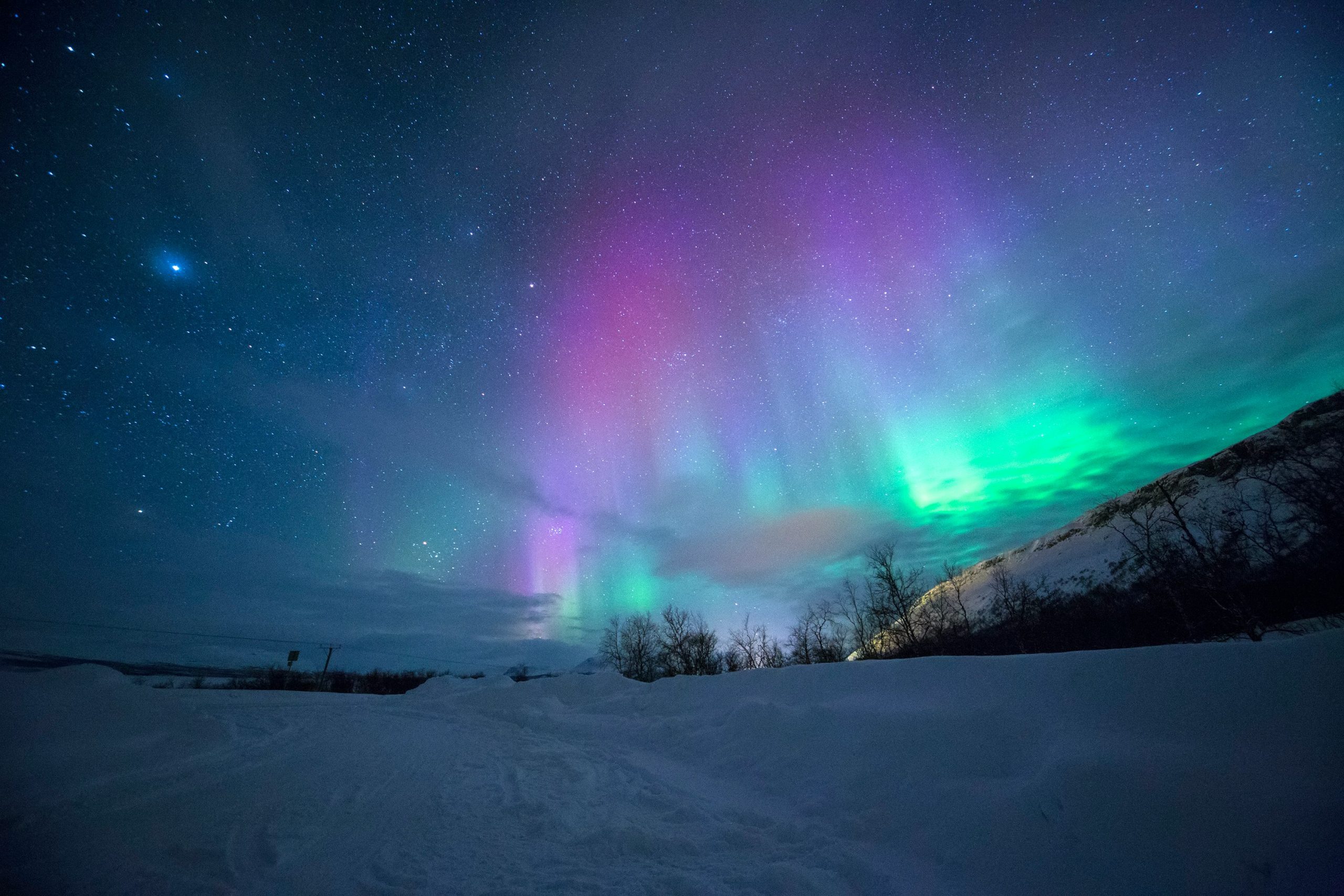Why Some Animals Are Bioluminescent and What It Means

Before diving in, please note: This post is for informational purposes only. If you’d like to know more about how we approach topics, feel free to check out our friendly Disclaimer Page.
Hey there, amazing readers! 🖐️ Just a quick note: yes, we know there are a lot of ads here. Trust us, we get it—it’s not the prettiest look, but they help us keep this blog alive and kicking. Those pesky little ads cover the costs of all the behind-the-scenes magic, from hosting and tech stuff to creating content we hope you’ll love.
We’re committed to delivering quality posts, and your support (even just sticking around despite the ads) means everything to us. So, bear with us, and thanks for helping us keep the good vibes rolling. Now, on to the fun stuff! 😉
TRANSLATE BUTTON AT THE END OF THE ARTICLE
A Quick Overview
Have you ever watched a firefly flicker on a warm summer night or seen a strange glow emanating from the ocean’s depths?
These sparks of light are just two incredible examples of bioluminescence—nature’s own form of light show.
It’s a phenomenon that fascinates scientists and nature lovers alike.
But why do some animals glow?
What advantages does this remarkable ability offer them?
Buckle in as we dive into the glowing world of bioluminescence!
Introduction to the Glowing World of Bioluminescence
Bioluminescence is a biological wonder that captivates anyone lucky enough to witness it.
It’s the ability of living organisms to produce light, and it’s found in a variety of creatures ranging from jellyfish to mushrooms.
In fact, it’s estimated that around 76% of deep-sea organisms exhibit some form of bioluminescence.
This phenomenon is not limited to aquatic life; certain terrestrial animals, such as fireflies and some fungi, also display this dazzling ability.
If you think about it, nature is filled with surprises.
Bioluminescent organisms use this ability for various reasons, from survival tactics to social interaction.
Imagine walking through a forest at night, and suddenly, the ground is alive with glowing fungi.
It’s not just a pretty sight; it’s a display of evolution at work.
So, why are these creatures glowing?
What does it all mean?
Let’s peel back the layers of this complex topic and shine a light on bioluminescence!
The Science Behind Bioluminescence Explained Simply
At its core, bioluminescence is a chemical reaction.
It occurs when a light-emitting molecule called luciferin interacts with an enzyme named luciferase.
This reaction produces light.
The specifics can get a bit complicated, but we can break it down:
Luciferin: A light-emitting compound that reacts with oxygen.
Luciferase: The enzyme that catalyzes the reaction.
Oxygen: This is what fuels the reaction.
The result?
Bright, beautiful light!
This light can appear in various colors, including blue, green, and even red, depending on the organism and its environment.
The beauty of bioluminescence lies in its efficiency; nearly 100% of the energy produced is emitted as light, making it a fantastic energy-saving strategy.
Let’s not forget, this glowing ability isn’t just for show.
Bioluminescence has evolved for specific functions that help these organisms thrive in their environments.
Why Do Animals Evolve to Glow in the Dark?
You might wonder, “What’s the deal with all this glowing?” The reasons for bioluminescence are as diverse as the creatures that possess it.
Discover "Dog Care: Learning How to Care for Your Furry Friend 🐾"
Here are some of the most common purposes:
Camouflage: Some species, like certain squids, use bioluminescence to blend into their surroundings.
They can match the light coming from above, making it harder for predators to spot them.
Attracting Prey: Many deep-sea fish use glowing lures to attract unsuspecting prey.
It’s like setting a light trap; the hungry fish gets closer, and then… dinner!
Defense Mechanism: When threatened, some creatures can produce sudden bursts of light to startle predators, giving them a chance to escape.
Mating Rituals: Fireflies are renowned for their light displays during courtship.
Each species has its unique flashing pattern, which helps attract the right mate.
So, bioluminescence isn’t just a pretty party trick; it’s a survival strategy.
Isn’t nature clever?
The Role of Bioluminescence in Predator-Prey Relations
In the grand dance of life, bioluminescence plays an essential role in the predator-prey dynamic.
It’s an intricate web of survival where light can mean life or death.
Here’s how it works:
Attraction: As previously mentioned, some predators use bioluminescent lures to draw in their prey.
The anglerfish is a prime example.
It dangles a glowing appendage, enticing smaller fish to come nearer.
Confusion: Some organisms, like certain jellyfish, can emit light to confuse predators.
Imagine a predator trying to pinpoint its meal in a swirling light show!
Warning Signals: Some species use bioluminescence as a warning.
For instance, the light emitted by certain jellyfish can signal that they are toxic or dangerous.
Ultimately, bioluminescence has a profound impact on the food chain.
It creates a balance and adds complexity to the interactions between various species.
Communication: How Glowing Creatures Talk to Each Other
Who knew glow sticks weren’t just for parties?
Bioluminescent organisms have their own ways of communicating, and light plays a huge role.
Here’s how:
Courtship Communication: Fireflies flash their lights to attract mates.
Each species has its own rhythm and pattern, which helps avoid confusion with other species.
Social Interactions: Some bioluminescent creatures, like certain types of plankton, use light to signal to one another in their communities.
This can coordinate group movements or warn of danger.
Aggression Displays: In some cases, glowing can signal aggression or dominance.
Think of it as a flashy way of saying, “Stay away, I’m not to be messed with!”
Through light, these creatures can share information in a way that’s both beautiful and efficient.
It’s like having a chat, but instead of words, they’re using dazzling displays of light!
Bioluminescence in the Deep Sea: A Dazzling Display
The deep sea is often viewed as a dark, mysterious realm.
However, it’s a vibrant stage for bioluminescent displays.
When you plunge into the depths, you’d be amazed by what you find!
Diversity of Species: Creatures like lanternfish, anglerfish, and certain types of jellyfish all exhibit bioluminescence.
Each has adapted its light-producing capabilities to suit its ecological niche.
Light Shows: If you’ve ever seen a documentary about the deep sea, you’ll know that glowing organisms create breathtaking light shows.
This can range from gentle glows to dazzling flashes.
Survival Strategies: In these depths, where light from the sun cannot reach, bioluminescence becomes crucial for survival.
The absence of sunlight means that many creatures rely solely on their ability to emit light for hunting and communication.
The deep sea is like nature’s own underwater disco.
It’s a harsh environment, but bioluminescence brings a vibrant twist to life beneath the waves.
Charming Fireflies: Nature’s Twinkling Light Shows
When we think of bioluminescence, fireflies often come to mind.
These little bugs bring magic to warm summer nights.
Not only are they mesmerizing, but they also serve vital ecological purposes.
Courtship: The flashing patterns of fireflies are a well-choreographed dance.
Male fireflies flash to attract females, who respond with their own light displays.
Species Identification: Each firefly species has its own unique flashing pattern.
This helps them attract the right mate and avoid crossbreeding, which is essential for maintaining species integrity.
Ecosystem Role: Fireflies play a role in pest control, as they often feed on other insects.
This makes them beneficial to gardeners and farmers.
People often chase these glowing insects, creating a sense of childlike wonder.
Fireflies remind us of the beauty in nature’s simplicity.
Fungi and Bioluminescence: Nature’s Hidden Glow
While we typically think of fireflies and marine organisms, fungi also boast this compelling trait.
Bioluminescent mushrooms glow in the dark, adding an enchanting element to woodland walks.
Survival Strategy: Some fungi use bioluminescence to attract insects, which help disperse their spores.
The glow acts like a beacon, guiding insects to the mushrooms.
Safety Net: The bioluminescence can also serve as a warning signal to herbivores that the fungi might be toxic.
Aesthetic Appeal: Many people are drawn to these glowing beauties, making them a popular subject for photographers and nature enthusiasts.
Next time you’re out in the woods after dark, keep an eye out for glowing mushrooms.
They’re nature’s way of lighting up the dark!
The Benefits of Bioluminescence in Land Animals
While most examples of bioluminescence are aquatic, some land animals also glow.
This ability can provide a variety of benefits.
Mating Displays: Some insects, like glow-worms, use bioluminescence to attract mates.
The glowing signals are essential for reproduction.
Defense Mechanisms: Some species can emit light to startle predators.
This sudden burst can give them a chance to flee.
Camouflage: Certain animals can use bioluminescence to blend into their surroundings, making them less visible to potential threats.
The glow of these land creatures adds to the rich tapestry of life.
Each flash serves a purpose, emphasizing the interconnectedness of all living things.
Conservation: Protecting Bioluminescent Species
As we marvel at the beauty of bioluminescence, we must also consider the importance of conservation.
Many bioluminescent species are threatened by environmental changes.
Habitat Loss: Urbanization and deforestation lead to loss of habitat for many glowing species.
Protecting these areas is crucial.
Pollution: Water pollution affects marine life, including bioluminescent organisms.
Clean water initiatives are vital for their survival.
Climate Change: Rising temperatures and ocean acidification pose threats to species that rely on bioluminescence.
By advocating for conservation efforts, we can help safeguard these glowing wonders for future generations.
After all, who wouldn’t want to pass on the magic of fireflies and glowing fungi to our kids?
Fascinating Bioluminescent Animals You Should Know
The world is teeming with bioluminescent creatures, each possessing unique characteristics.
Here are a few to pique your interest:
Anglerfish: Known for their bioluminescent lure that attracts prey.
Jellyfish: Many species glow, creating mesmerizing displays in the ocean.
Fireflies: These insects are famous for their courtship dances in summer nights.
Bioluminescent fungi: Mushrooms like Mycena chlorophos are often seen glowing in the forest.
Lanternfish: These small fish are among the most abundant bioluminescent creatures in the ocean.
Each of these animals contributes to the rich tapestry of life, reminding us of nature’s creativity.
Conclusion: The Magic and Mystery of Bioluminescence
Bioluminescence is a magical phenomenon that enchants our world.
From the flickering light of fireflies to the mesmerizing glow of deep-sea creatures, bioluminescent organisms captivate our imaginations.
They remind us of the wonders of evolution and the myriad ways life adapts to its surroundings.
As we dive deeper into understanding bioluminescence, we uncover not just the science but also the intricate web of life it supports.
This glowing ability highlights the beauty of nature and the importance of protecting these unique species.
So, the next time you see a glow in the dark, remember: it’s not just a light show; it’s a testament to the wonders of life!

The Enlightenment Journey is a remarkable collection of writings authored by a distinguished group of experts in the fields of spirituality, new age, and esoteric knowledge.
This anthology features a diverse assembly of well-experienced authors who bring their profound insights and credible perspectives to the forefront.
Each contributor possesses a wealth of knowledge and wisdom, making them authorities in their respective domains.
Together, they offer readers a transformative journey into the realms of spiritual growth, self-discovery, and esoteric enlightenment.
The Enlightenment Journey is a testament to the collective expertise of these luminaries, providing readers with a rich tapestry of ideas and information to illuminate their spiritual path.
Our Diverse Expertise 🌟
While our primary focus is on spirituality and esotericism, we are equally passionate about exploring a wide range of other topics and niches 🌍📚. Our experienced team is dedicated to delivering high-quality, informative content across various subjects ✨.
To ensure we provide the most accurate and valuable insights, we collaborate with trusted experts in their respective domains 🧑🏫👩🏫. This allows us to offer well-rounded perspectives and knowledge to our readers.
Our blog originally focused on spirituality and metaphysics, but we’ve since expanded to cover a wide range of niches. Don’t worry—we continue to publish a lot of articles on spirituality! Frequently visit our blog to explore our diverse content and stay tuned for more insightful reads.





